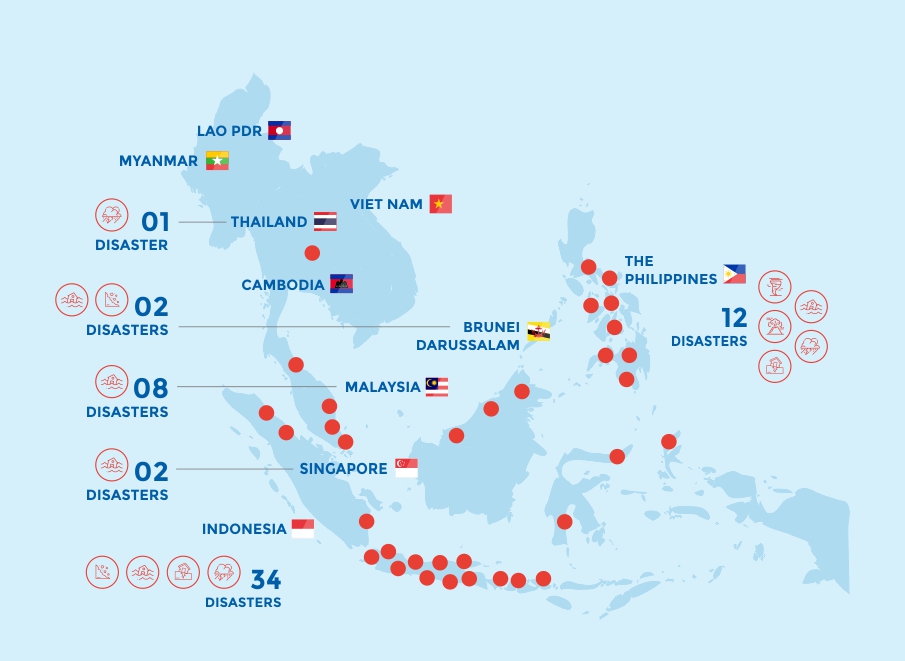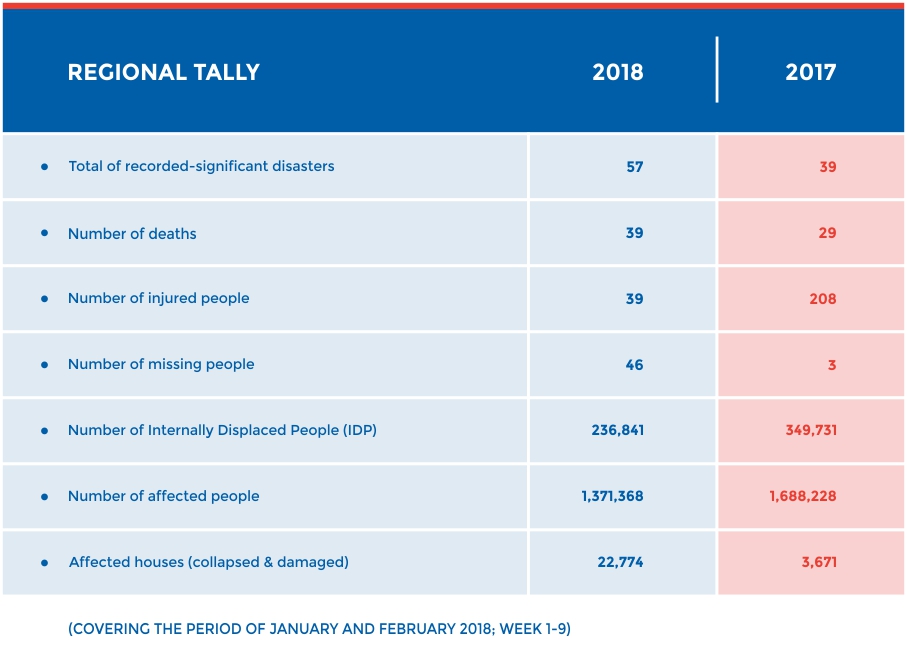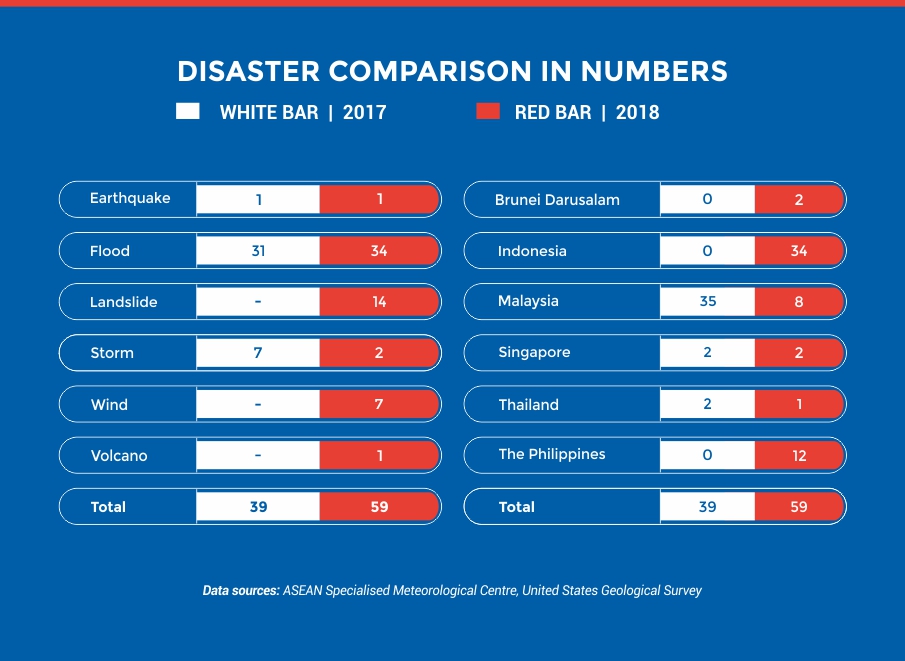
MONTHLY DISASTER REVIEW OUTLOOK
JANUARY AND FEBRUARY 2018 | DISASTER MONITORING & ANALYSIS
(DMA) UNIT, AHA CENTRE
GENERAL OVERVIEW OF JAN AND FEB 2018
Between January and February 2018, a total of 57 disasters were reported from within ASEAN Member States. Due to the higher-than-average rainfall; 57.8% of all disasters reported in this period are attributed to floods. In addition, landslides are of major concern in areas prone to slope failure which potentially cause disruptions and significant damage to major circulatory transport systems, as well as impacting communities and trade. In the northern ASEAN region, record-low temperatures have been reported during this winter season, with storms recorded in Viet Nam, Thailand and Cambodia. Whereas the emergency response operation for Typhoon Tembin was extended until the third week of January, additional impact of Tropical Storm Sanba (Basyang) affected more than two hundred-thousand people in the Philippines.
Earthquakes and volcanic activity remain high on the agenda, with two significant earthquakes observed in the region. A magnitude 6.1 earthquake occurred on the 23rd of January 2018, affecting provinces of Banten, West Java and Jakarta in Indonesia. Although there were over seven thousand homes damaged, the emergency response was managed well by the Indonesian authorities. More recently, a magnitude 7.6 earthquake was recorded in Papua New Guinea on February 26th, with tremors felt and light damage caused in several regencies of the Papua Province (Indonesia). The earthquake was followed by 53 strong aftershocks (M 5.0 and above) within the following week, without additional damage experienced in any parts of Indonesia. Also in Indonesia, the situation on Mount Agung, Bali, has greatly improved, with its alert level being lowered, and its mandatory exclusion zone relaxed. In the Philippines, Mount Mayon’s Phreatomagmatic Eruption, has been ongoing throughout January & February. This activity has affected the daily lives of more than 90,000 people in the Albay Province, yet there have been no human casualties reported, showcasing the result of effective preparedness and response.
OUTLOOK FOR MARCH AND APRIL 2018
ASEAN Specialised Meteorological Centre (ASMC) has forecasted that during the coming months, the region will begin a gradual transition from the current Northeast Monsoon season to the inter-monsoon period. The inter-monsoon period (April and May) is a transition period that sees low-level winds in the region being generally light and variable in direction, with an increase in light rain activity expected across ASEAN during this time.
For the March-April-May 2018 season, slightly below-average to near-average rainfall is forecasted for most parts of Southeast Asia, except for the Philippines, who can expect slightly above-average rainfall during these months. During March and April, slightly above-normal rainfall is forecasted over the northern parts of Kalimantan and Sulawesi, as well as the western districts of Papua.
Written by : Mizan Bisri, Qing Yuan Pang
DISCLAIMER
AHA Centre’s estimation is based on data and information shared by National Disaster Management Organisations (NDMOs) and other relevant agencies from ASEAN Member States, international organisations and news agencies. Further information on each recorded-significant disaster, description and details of data and information are available at: http://adinet.ahacentre.org/reports.



